Albert Frey was a Swiss-born architect who established a style of modernist architecture centered on Palm Springs, California, United States, that came to be known as "desert modernism".
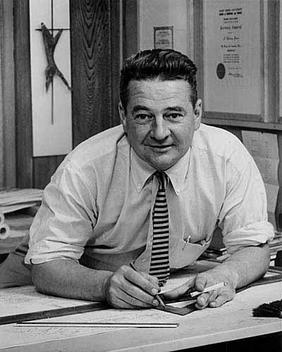
Archibald Quincy Jones was a Los Angeles–based architect and educator known for innovative buildings in the modernist style and for urban planning that pioneered the use of greenbelts and green design.
Emerson Stewart Williams, FAIA was a prolific Palm Springs, California-based architect whose distinctive modernist buildings, in the Mid-century modern style, significantly shaped the Coachella Valley's architectural landscape and legacy.

Mid-century modern (MCM) is a movement in interior design, product design, graphic design, architecture and urban development that was popular in the United States and Europe from roughly 1945 to 1970 during the United States's post-World War II period. MCM-style decor and architecture have seen a major resurgence that began in the late 1990s and continues today.

Alexander Construction Company was a Palm Springs, California, residential development company that built over 2,200 houses in the Coachella Valley of Riverside County, California, between 1955 and 1965.
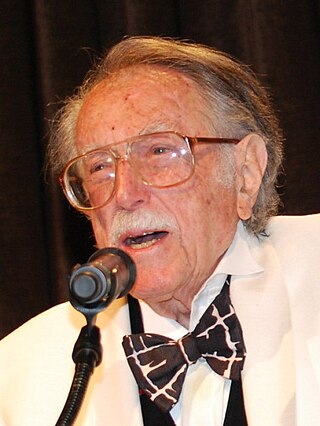
Julius Shulman was an American architectural photographer best known for his photograph "Case Study House #22, Los Angeles, 1960. Pierre Koenig, Architect." The house is also known as the Stahl House. Shulman's photography spread the aesthetic of California's Mid-century modern architecture around the world. Through his many books, exhibits and personal appearances his work ushered in a new appreciation for the movement beginning in the 1990s.

The Palm Springs Walk of Stars is a walk of fame in downtown Palm Springs, California, where "Golden Palm Stars", honoring various people who have lived in the greater Palm Springs area, are embedded in the sidewalk pavement. The walk includes portions of Palm Canyon Drive, Tahquitz Canyon Way, La Plaza Court and Museum Drive. Among those honored are presidents of the United States, showbusiness personalities, literary figures, pioneers and civic leaders, humanitarians and Medal of Honor recipients.
Frederick Monhoff was an American architect, artist, and illustrator. His architectural style ranged from art deco to mid-century modern, while his etchings of the 1920s-30s documented scenes of Native American and Mexican life in the American Southwest.

Palm Springs is a desert resort city in Riverside County, California, United States, within the Colorado Desert's Coachella Valley. The city covers approximately 94 square miles (240 km2), making it the largest city in Riverside County by land area. With multiple plots in checkerboard pattern, more than 10% of the city is part of the Agua Caliente Band of Cahuilla Indians reservation land and is the administrative capital of the most populated reservation in California.

Haralamb H. Georgescu (1908–1977), also known as Harlan Georgesco, was a twentieth century Romanian-American modernist architect. He had a 44-year career spanning time in both Romania and the United States before dying in California in 1977.
Howard Lapham was a modernist architect whose notable residences exist primarily in Southern California.
Alan Hess is an American architect, author, lecturer and advocate for twentieth-century architectural preservation.
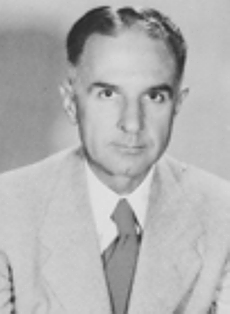
John Porter Clark (1905–1991) was an American architect. He worked with Albert Frey on several projects in Palm Springs, California, and was part of the Van Pelt and Lind firm. He has been referred to as a "mid-century modernist", and credited as one of the pioneers of "Desert Modernism", by using local rock, concrete blocks, metal and glass. His own house, the John Porter Clark House (1939) in Palm Springs, has been described as being in the international style and as one of the earliest examples of residential modern architecture in Southern California.
Donald Allen Wexler was an influential Mid-Century modern architect whose work is predominantly in the Palm Springs, California, area. He is known for having pioneered the use of steel in residential design.
The Elrod House is a residence in Palm Springs, California designed by American architect John Lautner and constructed in 1968. It is located on the edge of a hill at 2175 Southridge Drive in Palm Springs, California. The construction of the house was ordered by Arthur Elrod, the interior designer.

William Francis Cody was an influential desert modern architect working in Palm Springs during the peak of the Modern Architecture Movement. Like many of the architects during the mid-20th century, Cody designed almost anything Palm Springs allowed him to; houses, cluster housing, churches, offices, restaurants, schools, hotels, and club houses. His residential projects illustrated simplicity of form, natural light, and large windows displaying a smooth connection between interior and exterior. Cody maintained a diverse practice in the Coachella Valley of California. His work included designing country clubs, residences, hotels, a library, and church projects in Palm Springs, Indian Wells, Rancho Mirage, Palm Desert, and in southern California, Arizona, Mexico, and Cuba.
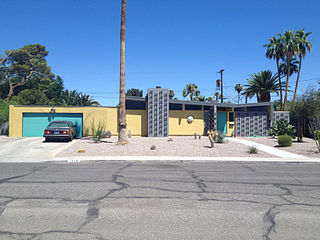
William Krisel was an American architect best known for his pioneering designs of mid-century residential and commercial architecture. Most of his designs are for affordable homes, especially tract housing, with a modern aesthetic.
The Palm Springs School of Architecture, often called Desert Modernism, is a regional style of post-war architecture that emerged in Palm Springs, California. Many of the architects who pioneered this style became world-renowned later in their own careers. Numerous buildings and homes by these architects remain in the Coachella Valley. Additionally, this style of architecture is showcased annually at the Modernism Week event in Palm Springs.
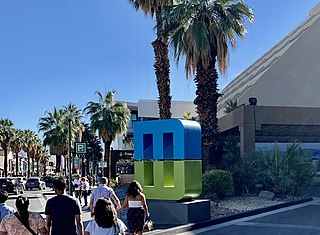
Modernism Week is a 501(c)(3) organization which provides public education programming fostering knowledge and appreciation of modern architecture, the mid-century modern architecture and design movement, the Palm Springs School of Architecture, as well as contemporary considerations surrounding historic preservation, cultural heritage, adaptive reuse, and sustainable architecture. Modernism Week provides annual scholarships to local students pursuing college educations in the fields of architecture and design and supports local and state organizations' efforts to preserve and promote the region's modern architecture. The organization is centered in the greater Palm Springs, California area in the Coachella Valley which is home to a significant collection of extant residential and commercial buildings designed in the mid-century modern vernacular.
The Hope Residence is a house at 2466 Southridge Drive in Palm Springs, California. It is 23,600 sq ft (2,190 m2) in size. The house was built for the American entertainers Bob and Dolores Hope and completed in 1979. The house is noted for its large undulating triangular roof, with a large central light shaft.











